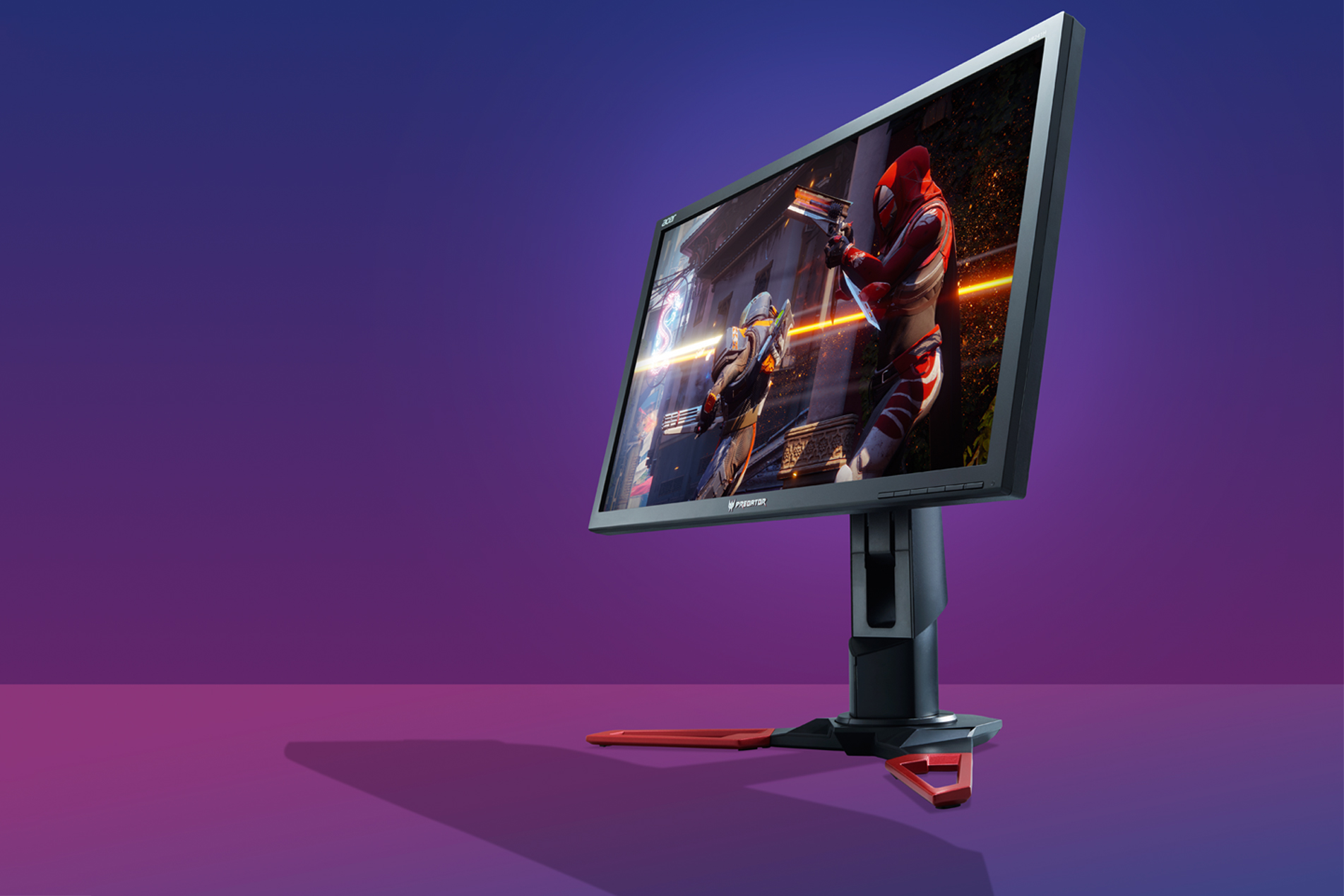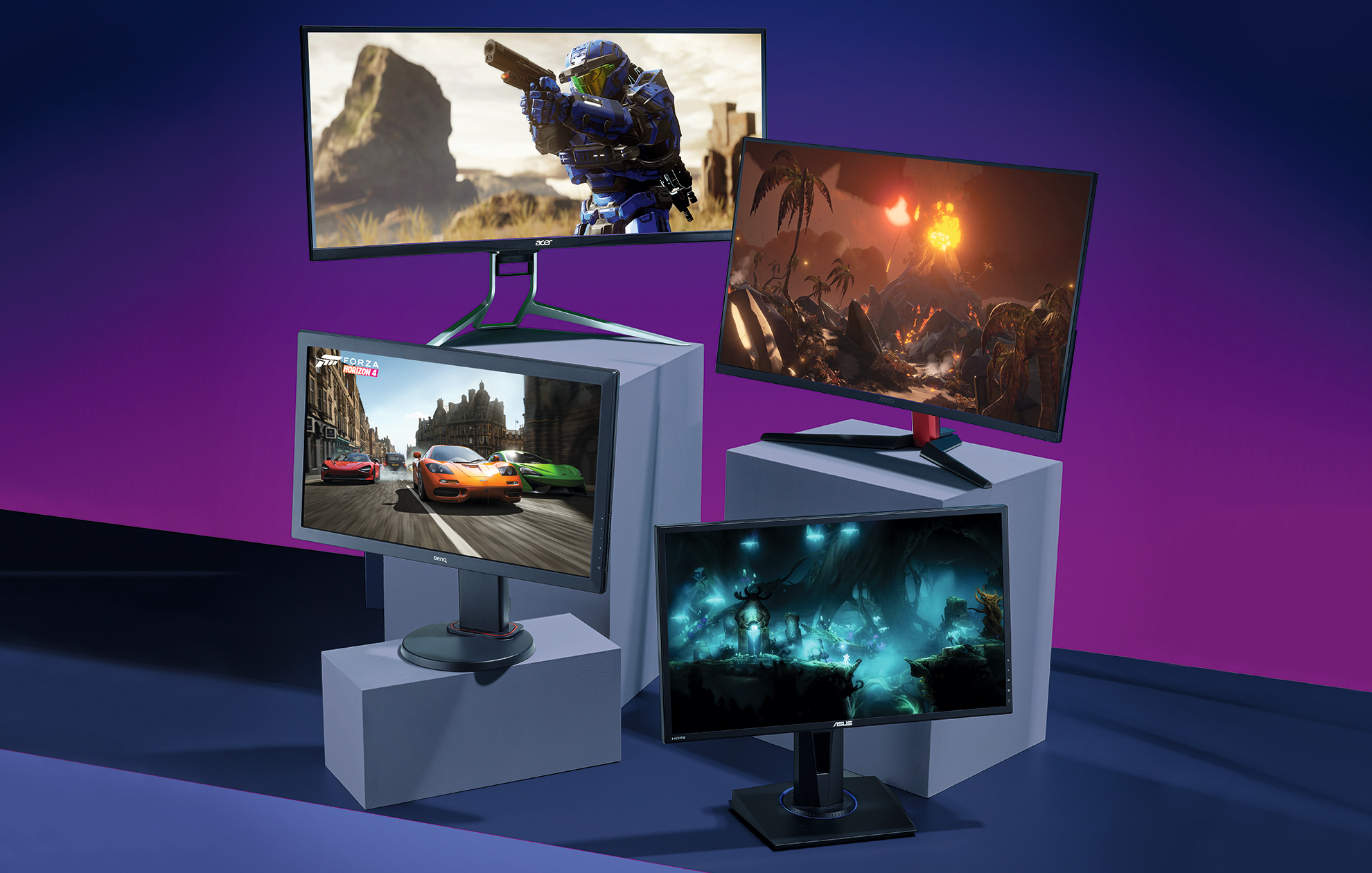
Take a look at PC gamer's (or an esports player's) system and you might notice a computer monitor on the desk rather than a TV. There’s a good reason for this. While televisions come in big sizes and can be fantastic value for money, they’re almost always respond slower to your inputs than a PC monitor, particularly if it’s specifically designed for gaming.
This reduced level of responsiveness can be hugely detrimental to the experience, especially in fast-paced esports games like Counter-Strike: Global Offensive. This feeling of responsiveness is measured in milliseconds (ms) and is derived from a combination of input lag and panel response time. Input lag is the time it takes to process and the display the input signal, whereas panel response is the time it takes to completely swap one image frame with the next.
TN Panels
A high level of input lag results in a noticeable visual delay when moving the mouse and is devastating for competitive gaming. A slow response time results in a blurry image, which can be very distracting in fast paced games.
The most responsive panel type is TN, or ‘Twisted Nematic’. Monitors equipped with these panels are the fastest to refresh making them great for fast, action-orientated games like shooters. They’re normally cheap, too, making them great for budget conscious players.
The downside is that TN panels are usually inferior to other types of panel for outright image quality, with reduced colour vibrancy and poor viewing angles.

IPS and VA Panels
IPS (In Plane Switching) monitors are very popular among creative professionals. They not only offer best in class viewing angles, but also provide vastly superior image quality across the board. Better (and often more accurate) colours and black levels allow triple-A games to really shine and make content creation easier.
While they’re more expensive than their TN siblings, IPS monitors can now be found for very reasonable prices. Unfortunately, those that match the responsiveness of TN panels tend to be on the pricey side.
An increasingly popular third option is to invest in a VA panel. Vertical Alignment displays are commonly used in high-end TVs from manufacturers like Samsung and Panasonic and are the kings of contrast. This makes them great for movies and games. While colour accuracy can vary wildly, they’re usually better than TN panels. Response times are similar to that of an IPS, but they can be prone to smearing in fast paced games.
No matter what type of panel you opt for, it’s always worth looking at a dedicated gaming monitor for the best experience. Response times are usually quoted in product descriptions (less than 6ms is a good baseline), although you might struggle to find any information on input lag. For that, you have to contact the manufacturer directly or read independent reviews.
High Refresh Rate
The final thing to look out for is refresh rate. Almost all monitors have a 60Hz refresh rate, but gaming monitors can go as high as 144Hz for a ridiculously smooth feel. The best monitors pair high refresh rates with variable refresh rate (VRR) technology. This allows the monitor to sync with the framerate of your game.
If your game runs at 45 frames per second, for example, then the monitor runs at 45Hz, resulting in a super smooth experience at any given frame rate without screen artifacting. VRR makes a big difference.
Once you’ve swapped to one of these displays, it’s hard to go back. Nvidia and AMD each use a different technology to achieve VRR, so if you’re on team green, you need a G-Sync monitor, while AMD Radeon users need a Freesync display.

- Brought to you in association with Currys PC World. Buy gaming laptops, desktops, components and more at Currys.co.uk.
The biggest gaming news, reviews and hardware deals
Keep up to date with the most important stories and the best deals, as picked by the PC Gamer team.

